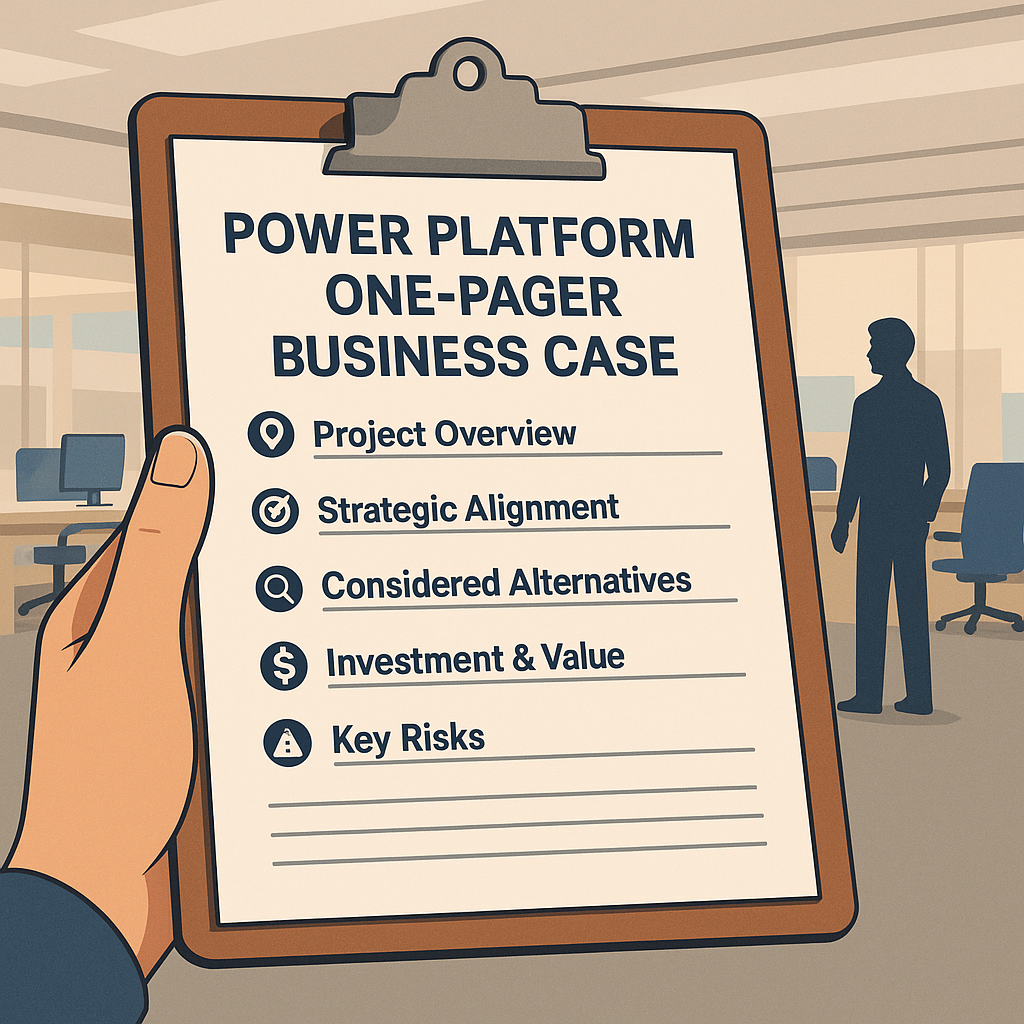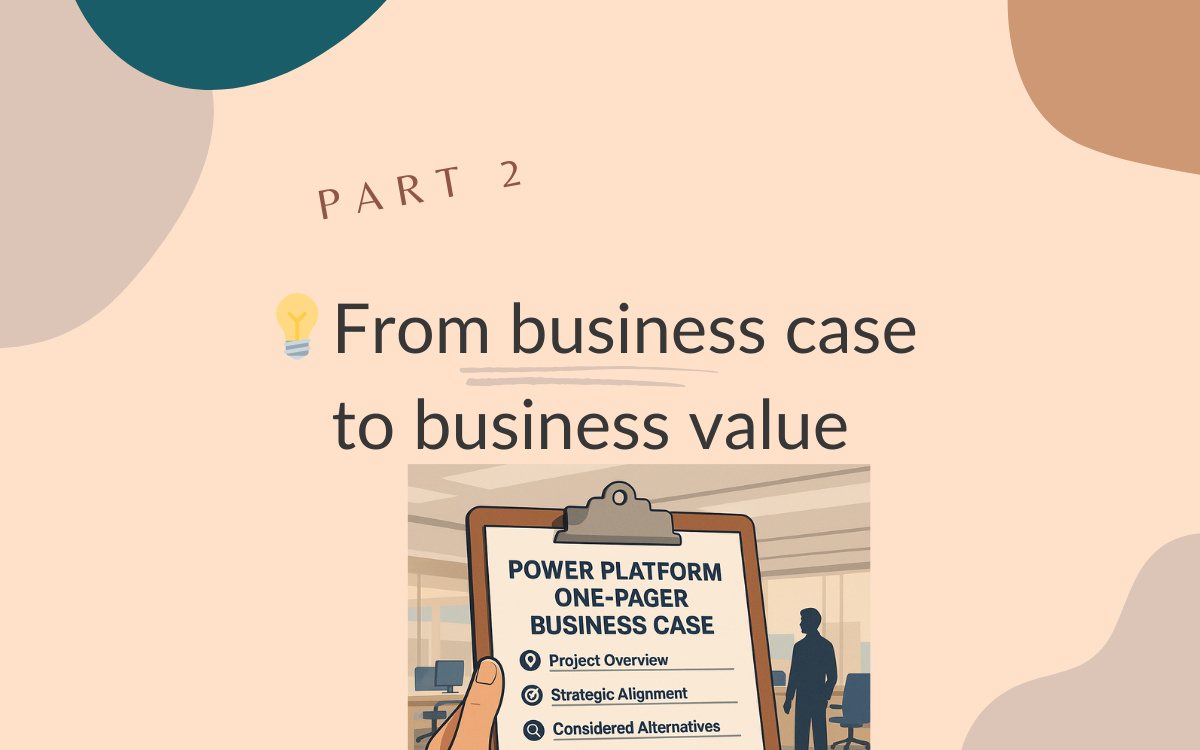💡From business case to business value with the Power Platform
May 12, 2025 • 3 • 445
Table of contents
Power Platform adoption doesn’t start with a full-fledged governance strategy—it starts when people begin experimenting. Even before you’ve set up a Landing Zone or Center of Excellence, there’s often already momentum. That’s a great thing.
But inspiration alone isn’t enough. What many organizations miss is giving employees a path from idea to implementation. That means making it easy to propose, shape, and justify a solution. And that’s where a simple business case one-pager comes in.
By providing a lightweight format for submitting ideas, you keep the door open for innovation—without overwhelming governance from day one.
As written in part 1 of this blog , it’s good to give employees the opportunity to share ideas by filling out a predefined one-pager.
Using a one-pager forces employees to think about their idea in a structured way. Let them create mutual enthusiasm, but also awareness that new developments have consequences.
When to write a Business Case
Business cases should be written for proposals that go beyond routine functional or technical maintenance, such as:
- Proposals for improving information systems
- Major maintenance of existing solutions
- Replacing outdated systems
- Bundling smaller improvements into a larger initiative
The business case justifies the project by balancing estimated costs, expected benefits, and associated risks.
Topics of the one-pager
Have employees think about the background of the idea—what problem they’re solving and what ambition drives them.
Encourage them to consider not only costs, but also benefits—both financial and non-financial, like Knowledge sharing, Increasing employee satisfaction, boosting engagement, enhancing brand image and internal reputation.

📝 Power Platform One-Pager Business Case
📌 Project Overview
- Project Name:
- Author:
- Date:
- Short Description:
Briefly describe what the project is about and what it aims to achieve.
🎯 Strategic Alignment
- Why this project?
How does this idea support organizational goals or solve a real problem? - What happens if we don’t do it?
- Why now?
- Is it part of a larger program or initiative?
🔍 Considered alternatives
- List of possible solutions explored
- Why this solution was chosen
💰 Investment & Value
| Aspect | Details |
|---|---|
| Estimated Costs | |
| Expected Benefits | |
| Potential Drawbacks | |
| Timeline | |
| Total Cost of Ownership |
Include both financial and non-financial benefits (e.g., employee satisfaction, branding, knowledge sharing).
⚠️ Key Risks
- Main risks and uncertainties
- Mitigation strategies
👥 Stakeholders
- Key stakeholders and departments involved
- Level of influence / interest
🧩 Resource Requirements
- Estimated FTEs required
- Budget owner(s)
- Other needed resources
✅ Goals
Try to decribe this as SMART as possible (Specific, Measurable, Acceptable, Realistic, Time-bound)
Tip: Keep this one-pager concise (1–2 pages max), and use it to spark structured conversations—not replace them.
Conclusion
Give your employees the tools and trust to turn ideas into impact—because that’s when the Power Platform truly comes to life!

